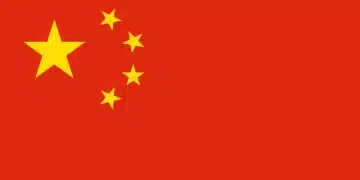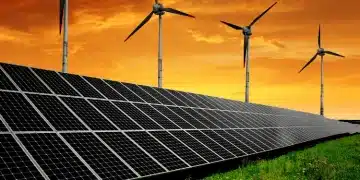South African Solar Industry Breathes Easy: Trump’s Tariff Hike Temporarily Avoided
Understanding Trump’s Solar Tariff Proposal
Overview of the proposed 31% tariff increase on solar products
The solar industry is facing significant changes with the proposal of a 31% tariff on imported solar products by the Trump administration.
This tariff aims to bolster the domestic solar manufacturing sector by making imported products more expensive, ideally encouraging local production.
However, this approach could have wide-reaching consequences, both positive and negative.
Potential impact on global solar market and trade relations
The implementation of such a substantial tariff is likely to shake the foundations of the global solar market.
By increasing costs for imported solar products, the demand for these items could fall, impacting international exporters, especially those in countries heavily reliant on the U.S. market.
This policy could lead to strained trade relations, as affected countries may view it as an unfair trade practice.
At the same time, American manufacturers might gain a competitive edge domestically, potentially boosting local industry and creating more U.S. jobs.
Timeline of the tariff announcement and implementation plans
The tariff proposal journey began in early 2023, amid growing concerns about the competitiveness of the U.S. solar manufacturing industry.
Public consultations and industry feedback phases followed, providing stakeholders an opportunity to express concerns and support.
The final proposal was announced mid-2023, with an expected implementation date set for early 2024.
This timeline creates a brief window for global markets to adjust and respond to the anticipated changes.
Considering the context of South Africa’s current exemption from this tariff, local manufacturers have a temporary respite from the pressures faced by other international producers.
Understanding these potential shifts in global dynamics is crucial as we explore the implications for South African solar exports and the broader industry impacts.
South Africa’s Solar Industry Relief
Temporary Exemption Granted to South African Solar Exports
South Africa’s solar industry breathed a collective sigh of relief when news broke of their temporary exemption from the proposed 31% tariff increase on solar products by the U.S.
While the reprieve offers a moment of respite, it’s crucial for South African manufacturers and suppliers to recognize the temporary nature of this exemption and prepare for possible future disruptions.
Implications for Local Manufacturers and Suppliers
The exemption allows South African solar manufacturers to stay competitive in the U.S. market for the time being.
This provides them with a significant advantage because it:
- ☀️Supports the local economy by securing current export levels.
- ☀️Ensures stability for manufacturing jobs within the solar sector.
- ☀️Allows suppliers to continue planning and budgeting without the immediate pressures of tariff-induced cost increases.
Moreover, this temporary relief gives South African businesses time to strategize and potentially diversify their export markets.
Current State of South Africa’s Solar Industry
South Africa’s solar industry has been experiencing a dynamic period of growth and transformation.
The country has made significant investments in renewable energy, aiming to reduce its reliance on coal and other non-renewable energy sources.
Currently, the industry is characterized by:
- ☀️Robust investment in solar infrastructure and technology.
- ☀️Favorable government policies promoting renewable energy projects.
- ☀️An increase in both domestic and international demand for South African solar products.
However, the industry still faces challenges such as:
- ☀️Competition from other nations with more advanced solar technologies.
- ☀️The need for continued innovation to meet international standards.
- ☀️Potential vulnerability to global trade policies and market shifts.
While the current exemption is good news, South Africa’s solar sector must stay vigilant and adaptive in an ever-evolving global market landscape.
This involves not only capitalizing on the present opportunity but also considering long-term strategies to ensure sustainable growth and minimize the impacts of future trade disruptions.
As the industry continues to navigate these developments, the focus must now shift to reinforcing market confidence and investment outlooks, ensuring that the solar sector remains resilient and competitive on the global stage.
Economic Implications and Market Response
Impact on South African Solar Product Pricing and Competitiveness
The temporary exemption from the 31% tariff increase on South African solar products provides substantial competitive advantages.
By avoiding increased costs, South African manufacturers can maintain attractive pricing for U.S. buyers, reinforcing their position in a highly competitive market.
This exemption helps retain the cost benefits tied to favorable manufacturing conditions and the country’s robust raw material resources.
As competitors, particularly from markets subjected to the tariff hike, grapple with higher costs, South Africa can leverage its pricing incentives to capture more market share.

Effect on Ongoing and Planned Solar Energy Projects
The tariff exemption ensures continuity for ongoing solar energy projects that depend on predictable supply chains and pricing.
These projects, both domestic and international, avoid potential delays and budget overruns that could arise from sudden cost increases.
For planned projects, the exemption instills confidence, promoting the initiation of new ventures and expansions.
Investors and developers can proceed without the looming threat of cost unpredictability, ensuring contributions to the region’s renewable energy capacity remain on track.
Market Confidence and Investment Outlook
Market confidence in South Africa’s solar industry has seen a boost from this timely exemption.
Manufacturers and suppliers are poised to capitalize on stable export conditions, fostering a positive investment atmosphere.
This resilience against the tariff shock is expected to translate into increased strategic planning and investments in technological advancements and infrastructure enhancements.
Key stakeholders, including investors and policymakers, view this period as an opportune moment to build on the industry’s strengths, ensuring sustainable growth despite potential global market instabilities.
As South Africa’s solar industry strategically navigates the current global trade landscape, the approach will set benchmarks for resilience and adaptability in the broader sector.
Future Considerations and Industry Preparedness
Long-term Strategies for South African Solar Manufacturers
The temporary exemption from the proposed 31% tariff increase offers South African solar manufacturers a unique opportunity to strengthen their operations and plan for long-term sustainability.
To remain competitive in the global market, they should prioritize improving production efficiency, investing in research and development, and enhancing the quality of their products.
Additionally, diversifying the product portfolio by developing innovative solar technologies could position South African manufacturers as leaders in renewable energy solutions.
By prioritizing sustainability and leveraging advancements like battery storage and smart grid technologies, they can meet international demand and set new industry standards.
Potential Alternative Markets and Trade Partnerships
South African solar manufacturers should also look beyond the U.S. market and explore alternative markets to mitigate potential risks from future tariff changes.
Europe’s strong focus on renewable energy creates a promising market. Asia, particularly countries like India and China, also demonstrates significant growth potential due to their increasing adoption of solar energy.
Strengthening regional trade partnerships within Africa can boost the continent’s energy independence and encourage widespread solar adoption.
Collaborating with neighboring countries to establish a robust intra-African trade network would not only enhance South Africa’s market reach but also contribute to regional energy security.
Industry Recommendations for Sustainable Growth
To ensure sustainable growth, the South African solar industry should adopt a multi-faceted approach:
Regional and Global Context
Comparison with other affected markets and their responses
Globally, Trump’s proposed 31% tariff hike on solar products has elicited varied responses from different markets.
Several countries with significant solar manufacturing operations, like China and India, have taken decisive steps to counteract the potential economic damages.
China, as the largest exporter of solar products, has sought to bolster its internal market and invest in other regions, such as the European Union, to mitigate the impact of decreased U.S. purchases.
India, faced with similar pressures, has emphasized increasing its domestic solar manufacturing capacity and reducing reliance on imports.
In contrast, countries within the European Union have leveraged their existing trade agreements and diversified portfolios to buffer against the tariff shock.
They have also lobbied for supportive policies to promote renewable energy within their borders, boosting local adoption of solar technologies.
Broader implications for African solar development
The potential ripple effects of the tariff increase extend to the broader African continent.
While South Africa enjoys a temporary reprieve, other African nations are evaluating this development’s implications for their nascent solar markets.
Countries like Kenya, Morocco, and Egypt have emerging solar industries that could benefit from South Africa’s temporary exemption, potentially encouraging intra-continental trade partnerships.
These nations may prioritize regional collaboration to foster a robust African solar market, decreasing dependency on volatile international trade landscapes.
Developing inter-African trade networks for solar products could enhance energy independence, spur economic growth, and drive innovation across the continent.
Global solar industry trends and trade dynamics
The broader global solar industry continues to evolve amid shifting trade dynamics.
Despite the U.S.’s protectionist stance, the global push for renewable energy remains strong.
Investment in solar technologies is increasing, with emphasis on innovation, cost reduction, and improving energy storage solutions.
Countries are actively pursuing sustainable energy goals, aligning their trade policies to support domestic industries while engaging in strategic international partnerships.
The U.S. tariff announcement underscores the need for solar manufacturers worldwide to stay adaptable and proactive.
As markets adjust, there is a concerted effort towards policy advocacy and cross-border collaborations that could stabilize the industry in the long term.
As we navigate this dynamic landscape, it’s important to remain vigilant and responsive to changes, ensuring a resilient and sustainable future for the global solar industry.





